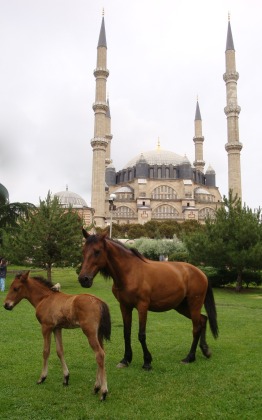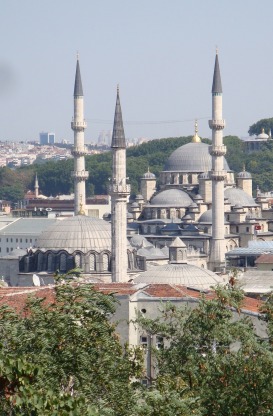If ever there was a man who stamped his mark on İstanbul it has to have been Koca Mimar Sinan (c.1490-1588), the great architect responsible for around 85 surviving buildings including the splendid Şüleymaniye Cami. Ironically, while the man’s work may be well known, Sinan himself remains, like his near contemporary, the great British playwright William Shakespeare (1564-1616), a shadowy figure about whom very little is certain.
Sinan appears to have been born to a Greek Christian family living in the small village of Ağırnas, near Kayseri in central Anatolia, in around 1490. In 1512 he was seized through the devşirme system, a form of taxation in human form levied on the non-Muslim populations of the Ottoman Empire, and brought to İstanbul where he converted to Islam and was given an education in the huge school for civil servants in the Topkapı Palace.
In his thirties, he served as a engineer for the janissaries in several of the military campaigns waged by Süleyman the Magnificent, so he was already about 48 when he became the head of the imperial architects; he didn’t complete work on his first great mosque, the Haseki Hürrem Cami in Cerrahpaşa, until he was almost 50.
Fortunately Sinan went on to have a very long life, working until well into his nineties. During that time he was responsible for around 320 assorted buildings, 120 of them in Istanbul alone. One hundred and ninety-six of his creations are still standing scattered across not only Turkey but also Bosnia, Greece, Hungary, the Crimea and Syria.
Although the great majority of his work can be found in İstanbul, he also designed many mosques and bridges for adjoining Trakya (Thrace).
Although the world heritage site of the Selimiye Cami in Edirne is regarded as Sinan’s finest work (an accolade with which he concurred), in İstanbul that accolade would have to go to the Süleymaniye Cami, the mosque that he built for his patron Süleyman the Magnificent between 1550 and 1557. Not surprisingly Sultan Süleyman was laid to rest in the graveyard immediately beside his prize, with his wife Haseki Hürrem, better known as Roxelana, in a separate tomb beside him.
Even Sinan wanted to be buried here. His tomb can be found on the outskirts of the complex. Predictably he had designed it for himself.
A square in the centre of Üsküdar now provides details of most of his works around the city.
 Sinan’s masterpieces: The Selimiye Cami in Edirne…
Sinan’s masterpieces: The Selimiye Cami in Edirne…
 …and the Süleymaniye Cami in İstanbul
…and the Süleymaniye Cami in İstanbul


